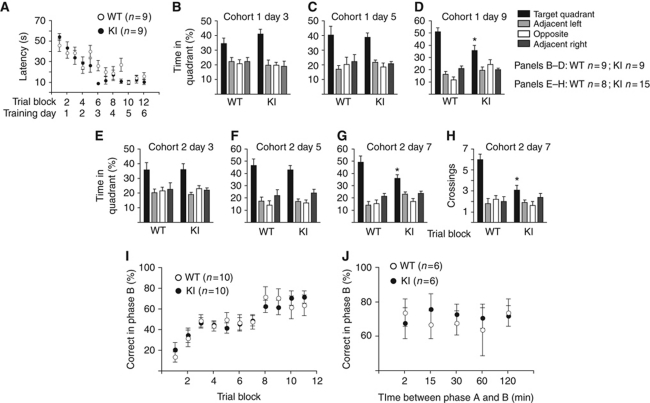Figure 8.
Consolidation but not learning of MWM is impaired in GluN2B KI mice. (A) KI mice learned to escape to a hidden platform to the same extent and as fast as littermate WT mice over 24 practice runs (12 training blocks, each consisting of 2 runs). (B, C) During probe tests 1 h after training sessions on day 3 (B) and on day 5 (C), KI mice searched the target quadrant (TQ) as selectively as WT. (D) During the probe test on day 9, KI mice spent significantly less time in TG than WT mice (F1,16=8.55, *P<0.01). (E–H) A second cohort of KI mice also showed normal performance in probe trials 1 h after training sessions on day 3 (E) and day 5 (F) but spent less time searching in the TQ during probe tests on day 7 than WT mice (G; F1,13=6.87, *P<0.05). The number of TQ crossings (H) and proximity to TQ was also reduced in KI mice (KI: 37.3±1.7 cm; WT: 30.5±1.8 cm; F1,13=6.18, *P<0.05). (I) GluN2B KI mice learned the radial arm maze task with the same time course and to the same degree as litter-matched WT mice. Shown are correct entries as percentage of total entries during phase B into arms that had been closed in phase A over 10 consecutive days. (J) After reaching criterion for learning, the interphase intervals were randomly increased to 15, 30, 60, or 120 min to test short-term spatial memory. Again, there was no significant difference between groups at different intervals (t-test: *P>0.05 at 2, 15, 30, 60, and 120 min intervals). All data are shown as mean values±s.e.m.

